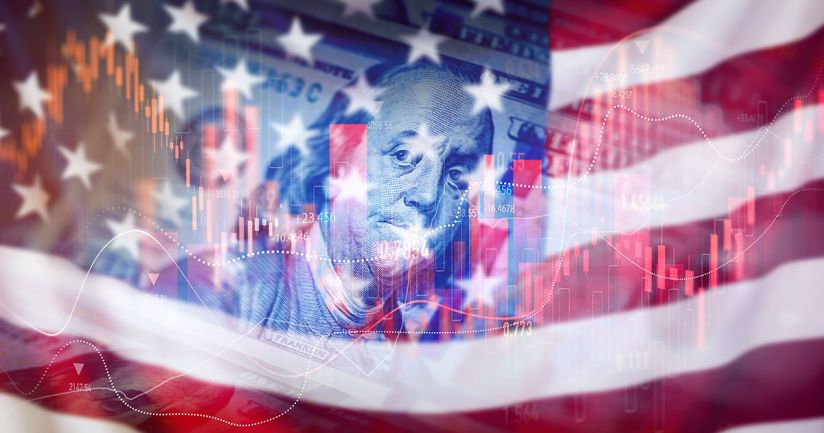L’AGEFI – Mind the US landing debate
Translation of an article published by L'AGEFI on 13 January 2025
By Michala MARCUSSEN, Group Chief Economist

2024 began with hard landing fears on both sides of the Atlantic, but ultimately saw a soft-landing engaged, with inflation coming down and labour market tightness easing but with activity still holding sufficiently firm to keep unemployment low. The US is admittedly at a higher altitude, with GDP growth for 2024 set to clock in around 2.7% compared to around 0.7% for the euro area. This 2 percentage point's growth gap is nearly twice that observed between the US trend potential of around 2% and that of the euro area at just over 1%.
As we enter 2025, the market concern is that the US is heading to a no landing path, forcing the Fed to halt its easing cycle well before rates have been returned to neutral. The US 10 year bond yield traded above 4.6% in the first full trading week of 2025; levels last seen in the spring of 2024 when the no landing debate last gripped the market. The difference is that US exceptionalism in terms of the economic growth is today seen as far less beneficial to the rest of the World. Indeed, at the beginning of 2025, market concerns for the euro area, and several other major economies, centre on hard landing.
US tax cuts arguably offer some positive spillover, but higher US tariffs, along with the expected retaliatory measures, are seen to more than offset this positive for the rest of the World. These concerns are reflected in the strength of the US dollar, which is trading well above levels observed prior to the US elections. And, while currency depreciation is often heralded as lifting competitiveness, this is not only overshadowed in the present context by the threat of tariffs but also by broader geopolitical uncertainty.
A weaker currency, moreover, raises the prospect of higher imported inflation and makes servicing dollar debt far more expensive, an issue in particular for many emerging and developing countries. Higher US yields rates are, moreover, spilling over also to other major bond markets, marking an additional headwind.
Impact of deregulation plans
The incoming Trump Administration’s plans for deregulation also deserves mention. While such policies can be favourable if coming from a point of excess, the present prospective loss of global co-operation on regulatory standards risks frictions in trade relations and the functioning of global financial markets. Moreover, should deregulation prove excessive, this could sow the seeds of future crisis.
With these observations in mind, it is not surprising that while the debate in the US at present is no-landing, it is already now turning to the risk of hard-landing for the euro area and several other major economies.
Returning to the US exceptionalism, several of its drivers in recent years are now at risk of disappearing. Top of the list is immigration, which according to estimates from the Congressional Budget Office
(CBO) is set to account for just over 80% of the 1.15% population increase in 2024. This population growth is well in excess of the 0.4% annual average that prevailed during Trump’s first presidency. With Trump promising an even tough stance on immigration during his second mandate, the CBO’s projection of average population growth at just under 0.5% per annum over 2025-28 could well be disappointed. This matters as strong population growth has not only delivered a welcome supply of labour, but also supported consumption and housing demand.
Turning to fiscal policy, consensus is that this will remain expansionary, but with a mix tilted more towards tax cuts and less towards spending. However, if the new Department of Government Efficiency (DOGE) delivers large savings of Federal spending over the coming years, the fiscal impulse, and not least for federal employees and private sector jobs related to government spending cut could add a headwind. With the risk of immigration policies and tariffs adding to inflationary risks, the danger is that the Fed would struggle to respond quickly to rising unemployment.
For all these uncertainties driving market debate on the US economic outlook, the economic forecasts shaping the consensus are huddled closely together in a fairly narrow range of 0.5 to 2.9% for the US growth outlook in 2025, with the average at 2.1% (source: Bloomberg). Rather than reflecting confidence in the US outlook, this narrow consensus more likely reflects a lack of visibility on what actual policies to factor in.
As actual policies come into focus, the debate on the US economy could well shift from no-landing to hard-landing in the course of 2025.
-
 Michala Marcussen
Michala MarcussenChief Economist and Head of Economic and Sector Research for the Group